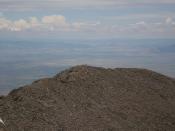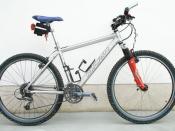Problem identified
Baldwin Bicycle Company (Baldwin or the Company), a small "mid-market" bicycle manufacturer, had a "private label" opportunity with Hi- Valu Stores, Inc. ( Hi- Valu), which operated discount department chain stores in the Northwest. Baldwin had to make a decision whether to accept the Hi-Valu's Challenger deal or not. To make an informed decision, the company should exam a blending of financial, marketing, and strategic implications of the Challenger deal.
Financial analysis
Current financial situation
With an annual ROA of 3.15% in 1988, Baldwin's current financial situation is not favorable at all (see exhibit 3 for ratio analysis). First of all, the company had poor assets management. The high inventories and accounts receivables, which account for 62% and 31% respectively of total current assets, substantially impair the financial liquidity (see exhibit 4 -balance sheet). As the cash ratio is merely 9.83% (see exhibit 3), the company is extremely short of cash flow and at the danger of illiquidity.
The low inventory turnover of 2.9 times per year signals that the company should take measure to improve its asset management (see exhibit 3).
Furthermore, the company is facing a high risk of insolvency in the future due to its highly leveraged financing. The high Debt to Equity ratio of 1.6 may be a barrier for further financing at a reasonable cost (see exhibit 3).
Besides, the company's profitability is not promising at all. The annual return on sales of 2.49% provides the company little room for growing (see exhibit 3). Return on equity, driven by the low asset turnover, low return on sales and high D/E ratio, is shabby compared to the cost of funds.
Challenger deal profit analysis (see exhibit 1)
The Challenger deal will bring an additional $577,250 contribution margin to Baldwin. Selling at $92.29/unit, the Challenger...



Baldwin Bicycle
None of the attachments are connected to this essay, so you can't see how the author arrived at the numbers. A definite deficiency. If you can't explain how you got the numbers, what's the point?
4 out of 5 people found this comment useful.